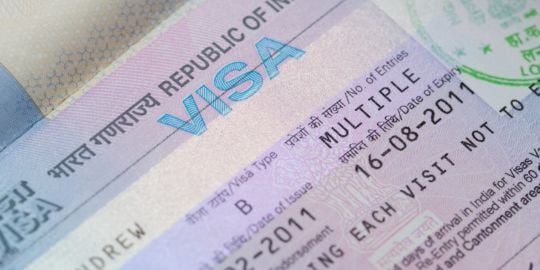Taxes in India

India is a vast country that has been attracting tourists, students as well as professionals and investors from all across the world. If you are considering relocating to India, make sure to enquire about the country's taxation structure, which underwent major changes in 2017. There are different taxes that you will be liable to pay. In general you will have to pay income tax, corporate tax if you are setting up a business, in addition to tax on goods and services.
Paying tax in India
You must apply for a Permanent Account Number (PAN) and Aadhaar card once you reach India. These are cards with unique digit identification numbers. They serve as identity cards recognised across the nation. You may need them during several administrative formalities. In fact, PAN is required to be stated on all the correspondences that you will need with the tax authorities. While you can apply online for a Pan Card, you will need to go in person to the nearest enrollment center to apply for an Aadhaar card. Nowadays, it is mandatory to link your Pan card with the Aadhar card.
The tax year starts from April 1st and comes to a close on March 31st of the following year. For individuals working as employees with a firm and independent workers, they are required to submit their tax return by July 31st of the same year at the latest. On the other hand, companies and businesses operating across the country have to submit their tax return on 30th September. However, these dates may be altered as and when required, by the government.
The tax is calculated according to the income tax slabs announced by the government every financial year in the budget.
Attention:
In 2017, the government made it mandatory to link PAN Card with Aadhar card for filing of income tax returns. As per the latest Income Tax Department notification, the tax department will not process the tax returns until PAN and Aadhaar are linked.
Income Tax in India
Any person attracting a taxable salary in India is liable to pay income tax. In the case of foreign residents, incomes received, accrued or arisen in India are taxable. There are different tax bands allotted for different amounts of salaries. For the year 2016-2017, individuals (including foreigners) are required to file a tax return in India if their salary exceeds the maximum limit of INR 250,000.
According to the new tax regime in 2020, For persons receiving an income between INR 250,001 to INR 500,000 will have to pay tax at a rate of 5%. For salaries ranging between INR 500,001 and INR 7, 50,000, income tax rate is capped at 10%, plus an additional INR 12,500. Those receiving a monthly salary between INR 7, 50,001 and INR 1million have to pay tax at a rate of 15% in addition to INR 37,500.
You can easily file your tax return online, where you will have to fill out a tax declaration form. This is particularly important for individuals receiving more than INR 500,000 per month. As regards those who receive income less than INR 500,000 per month and whose savings account balance is less than INR 10,000, they can submit their tax return in person at the nearest tax office to their place of residence.
Corporate tax in India
Corporate tax is levied in India on domestic as well as foreign companies. The tax amount varies according to the company's annual income. Thus, in general, companies of foreign origin have to pay tax at a rate of 42% that includes base tax and surcharge. This percentage is lower for domestic companies.
Note that corporate tax on foreign companies also depends a lot on the taxation agreements made between India and the foreign countries. For example, corporate tax on an Australian company in India will depend upon the taxation agreement between the governments of India and Australia. Hence, it is important that you verify the existence of any such treaty between India and your home country.
GST in India
Value-added tax (VAT) is a form of tax that was introduced to provide transparency and uniformity to the tax payment process. This tax was added to the cost of goods at every step of production and distribution. However, with the introduction of GST, all the indirect taxes, including VAT, are no longer applicable.
This new tax structure is India's one of the most ambitious reforms, aimed at achieving significant economic growth. Introduced on July 1st, 2017, the GST encompasses a common tax structure that will replace the numerous levels of state and federal taxes with a single, unified tax on goods and services across the country.
There are several products and services that come under the GST system. In fact, the government has categorized up to 1300 items under various tax slabs. Various tax slabs include 5%, 12%, 18% and 28%.
Useful links:
Indian Income Tax Department
India Official Portal - Apply for a PAN Card









